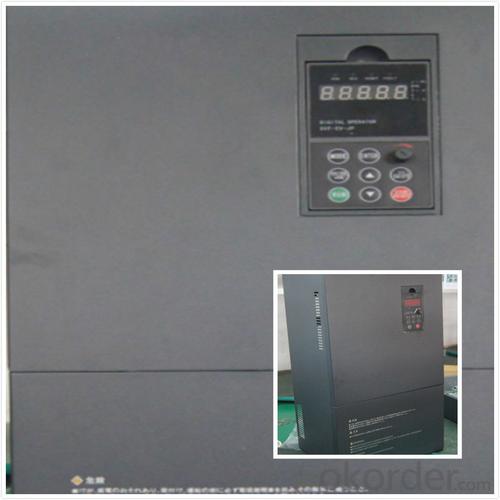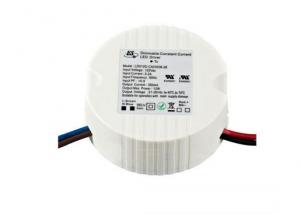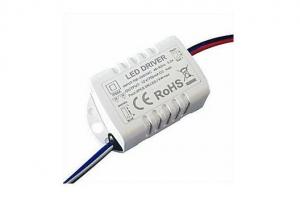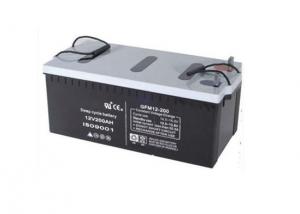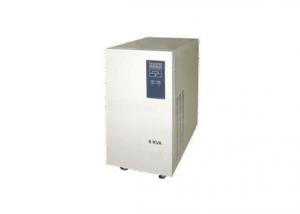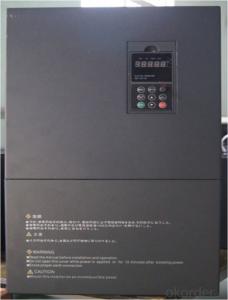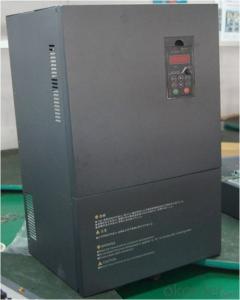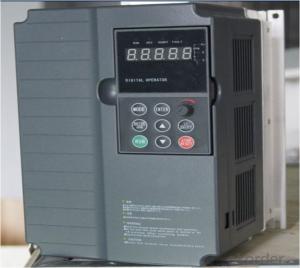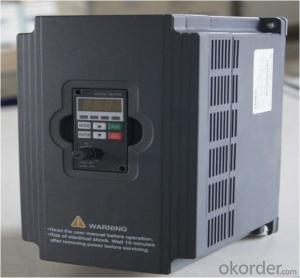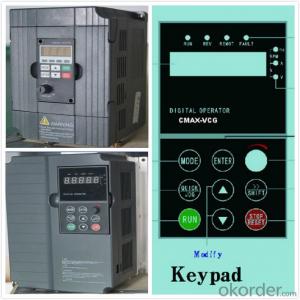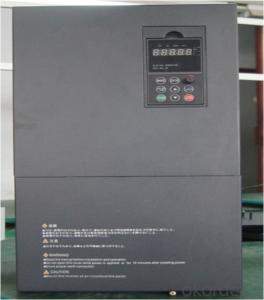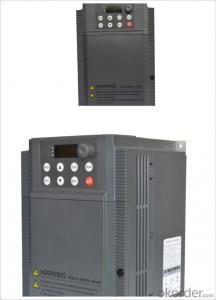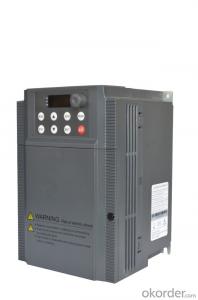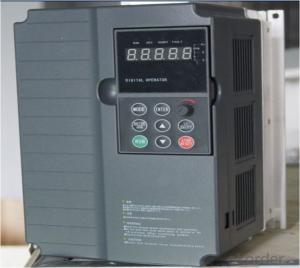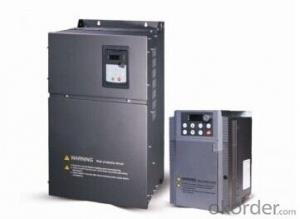China Best Selling VFD Frequency Drive 3 phase 380V 15kw
- Loading Port:
- Tianjin
- Payment Terms:
- TT OR LC
- Min Order Qty:
- 1 pc
- Supply Capability:
- 100000 pc/month
OKorder Service Pledge
OKorder Financial Service
You Might Also Like
Specifications
1.220V Single Phase Variable Frequency Drive 2.2KW
2.Advanced control technology
3.Easy to operate
220V Single Phase Variable Frequency Drive 2.2KW
General
CNBM frequency inverter is a high-quality, multi-function,
low-noise variable frequency drive which is designed, developed and manufactured according to international standards.
It can meet different needs of industrial conditions.
The inverter applies advanced control technology of space voltage vector PWM, with functions of constant voltage control, power-off restart, dead zone compensation, automatic torque compensation, online modification parameter, high-speed impulse input, simple PLC and traverse.
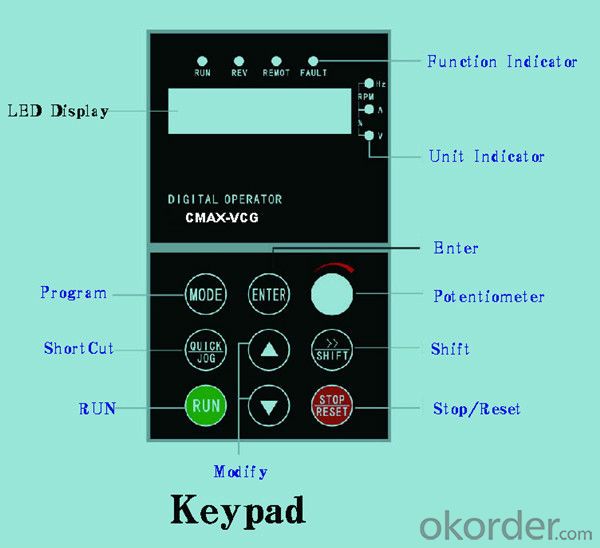
Product Name:CMAX-VCG15/P18.5T3 ~ CMAX-VCG18.5/P22T3
Application
Textile: coarse spinner, spinning frame, wrap-knitting machine, loom, knitting machine, silk-spinning machine, etc.
Plastic: extruder, hauling machine, decorating machine, etc.
Pharmacy: mixer, roaster, etc.
Woodworking: engraving machine, sander, veneer peeling lathe, etc.
Papermaking: single type papermaking machine, etc.
Machine tool: non-core grinding machine, optical lens grinding machine, cutting mill, etc.
Printing: cloth-washing machine, dye vat, etc.
Cement: feeder, air blower, rotary furnace, mixer, crusher, etc
Fan and pump: kinds of fans, blowers and pumps
Specification
Item | Specification | |
Input | Input voltage | 220/380V±15% |
Input frequency | 47~63Hz | |
Output | Output voltage | 0~input voltage |
Output frequency | 0~600Hz | |
Peripheral interface characteristics | Programmable digital input | 4 switch input, 1 high-speed impulse input |
Programmable analog input | AI1: 0~10V input AI2: 0~10V input or 0~20mA input, | |
Programmable open collector output | 2 Output (3.7kW and above: 1 Open collector output) | |
Relay Output | 1 Output (3.7kW and above: 2 Relay output) | |
Analog output | 2 Output, one is 0~10V, another is 0~20mA or 0~10V | |
Keypad | Display:5-digit 8-section LED (Red), 2 indicators; parameter setting: 8 keys (including multi-function hot key ), 1 potentiometer | |
Technical performance characteristics | Control mode | All digital space voltage vector SVPWM algorism |
Overload capacity | G purpose: 150% rated current 60s P purpose: 120% rated current 60s | |
Speed ratio | 1: 100 | |
Carrier frequency | 1.0~10.0kHz | |
Torque compensation | Linear, multi-point, 1.3th power, 1.7th power, 2.0th power reduced torque; Compensation voltage range: automatic compensation and manual compensation 0.1~10% | |
Automatic voltage adjustment | It can automatically maintain output voltage constant when grid voltage fluctuates. | |
Automatic current adjustment | When the current is over current limit, under clocking automatically limits output current. | |
Function characteristics | Frequency setting mode | Keypad digital analog input, keypad potentiometer, impulse frequency, communication, multi-step speed and simple PLC, PID setting and so on, switch-over of setting modes. |
Simple PLC, multi-step speed control | 16-step speed control | |
Special function | Traverse control, length control, time control | |
QUICK/JOG key | User-defined multi-function hot key | |
Protection function | Over-current, Over voltage, under-voltage, over-heat, phase failure, over-load and motor over-load | |
Working condition | Installation site | Indoor, altitude of less than 1km, dust free, non-corrosive gases, no direct sunlight |
Application environment | -10°C~+40°C, 20~90%RH (no dew) | |
Vibration | Less than 0.5g | |
Storage temperature | -25°C~+65°C | |
Installation type | Wall-mounted type, floor cabinet type | |
Cooling mode | Air-forced cooling | |
- Q: How does the frequency converter fit the brake unit and the brake resistor?!
- When the motor drives the motor to stop, the load on the motor is kinetic, and the motor must be consumed to stop the motor
- Q: It was when processing a workpiece, processing spindle stops suddenly (other are normal) a check is, I jump out of the inverter, I can click on a processing, and then processing not long after they happen, (do not open the machine spindle machining will also be the case)
- It should be a frequency converter. Right now, look at the frequency converter output frequency settings, tune, and suggest the next election wide output frequency converter, or simply PLC
- Q: 1, the frequency converter to the motor cable should be shielded cable? 2, whether there are specifications?
- Do not use shielded cables have several conditions: the first is from the inverter to motor wear long steel pipe laying cable. Second is the frequency converter to the motor cable line routing (cable bridge, cable ditch), there is no analog signal cable or other weak signal cable. Otherwise, from the debug runtime, if the inverter cable cable line motor and analog signal very close, even if the analog signal shielded cable control cable when the motor running is still very obvious interference of analog signals, especially large power motor.
- Q: What is frequency conversion? What is the function of frequency converter?
- Soft start energy-saving1: Motor hard start a serious impact on the power grid, but also on the power grid capacity is too high, damage to the baffle and valve high current and vibration generated when starting the great of equipment, is extremely detrimental to the life line. While the use of variable frequency energy saving device, using the frequency converter soft start function will start the current starting from zero, will not exceed the maximum rated current, the impact on power loss and the power supply capacity to prolong the service life of equipment and valves. It saves the maintenance cost of equipment.
- Q: Ask, what is the ratio of frequency converter?
- Three inverter operation indicator light, the output frequency from 0.0Hz to potentiometer set frequency and the output frequency ratio is 1:1.5:2, adjust the tone potentiometer, change the motor speed and the speed of three units, according to the proportion of linkage. The output frequency of the three inverters can be adjusted with three Trimming Potentiometer respectively.
- Q: What's the function of this brake unit?
- In order to digest this part of the energy, the transducer consumes the energy of the feedback current through the resistor.If the inverter is more advanced, this part of the current can also be sent to the call back network through the controlled rectifier bridge. There's no braking resistance.
- Q: How do two inverters synchronize?
- First of all, to determine whether the speed of the two conveyor is very strict (there is strict relative position requirements), if not, can use the following program:1. use a double potentiometer to tune two inverters simultaneously, one with a potentiometer to adjust the ratio between the two.
- Q: Can the motor with frequency converter directly wave the insulation?
- Frequency converter with motor, is a high-power three stage tube, C, E in the output, you directly shake insulation, measuring the pressure of the transistor. So you can't measure it.
- Q: What is the difference between SIEMENS inverter and built-in filter?
- There is no built-in filter converter in the price slightly lower, mainly used in the equipment efficiency (power factor) requirements are not high, anti-interference ability requirements are not strict place;The frequency difference with built-in filter is mainly to the requirements of different electrical parameters in specially designed, can improve equipment (power factor), has the good anti-interference ability, prevent the transient surge of inverter module impact, has a good protective effect.
- Q: What is the difference between inverter energy consumption braking and motor energy consumption braking?
- The reverse brake has one of the biggest disadvantages: when the motor speed is 0, if the power supply is not removed in time, the motor will reverse. There are two methods to solve this problem: 1, in the control loop of the motor power supply phase, adding a time relay, when the brake after a period of time, disconnect the power after inversion, so as to avoid motor reversal. But the braking time is difficult to estimate because of this method, so the braking effect is not accurate. 2. A speed relay is added to the control circuit of the motor's inverting power supply. When the sensor detects the speed of the motor is 0, the inverter power of the motor is cut off in time. Because of this method, the speed relay monitors the motor speed in real time, so the braking effect is much better than the last one. It is precisely because reverse braking has this characteristic, therefore, it is not allowed to reverse the machinery, such as some lathes, etc., the brake method can not use reverse braking, and can only use energy consumption braking or mechanical brake.
Send your message to us
China Best Selling VFD Frequency Drive 3 phase 380V 15kw
- Loading Port:
- Tianjin
- Payment Terms:
- TT OR LC
- Min Order Qty:
- 1 pc
- Supply Capability:
- 100000 pc/month
OKorder Service Pledge
OKorder Financial Service
Similar products
Hot products
Hot Searches
Related keywords

